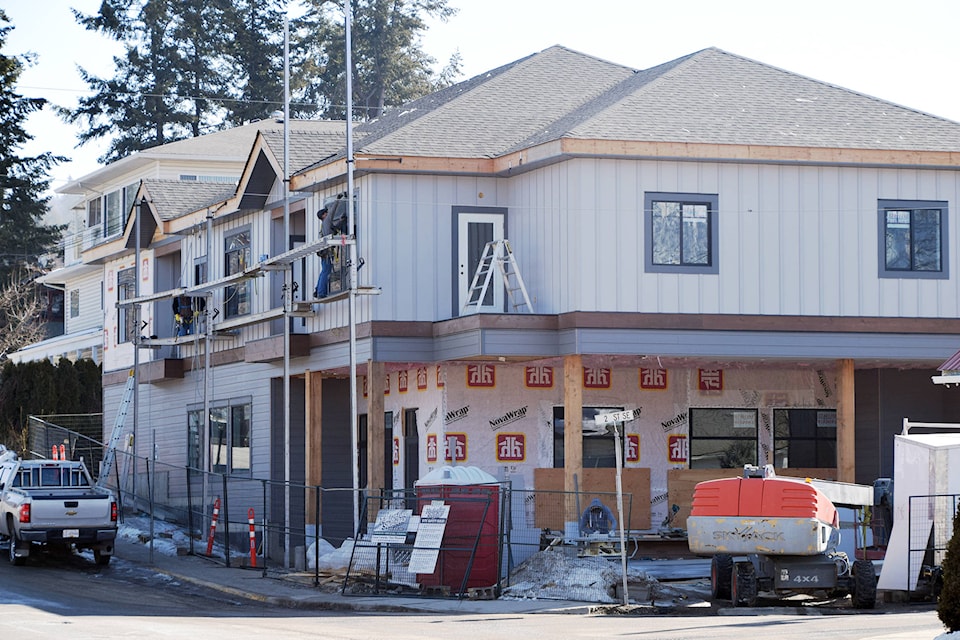A true local economic driver is a sector that brings in money from outside the community, rather than a sector that either recirculates money within the community or removes it to pay for goods that come from afar.
Although the retail sector likely employs the most people, the three largest economic drivers in the Shuswap are pensions and investment incomes, government jobs and construction.
Read more: Shuswap home captures gold
Read more: Sandy Ridge Construction wins national award
Throughout the Shuswap and especially in Salmon Arm, new home construction is booming in order to provide homes for the growing influx of new residents and local residents who are downsizing. The construction sector is very diverse, as it includes not just carpenters and contractors, but also equipment operators, surveyors, electricians, plumbers, engineers, masons, concrete suppliers, building supply staff, along with many other trades and services.
One of the advantages available to new residents who are looking for a contractor or tradesperson to either build a new home or renovate an existing one, is they can contact a unique local organization, the Shuswap Construction Industry Professionals (SCIP) to find a skilled professional. The 234 members of SCIP well represent the wide diversity of the sector and include cabinetmakers, civil engineers, landscapers, building inspectors, roofers, insurance providers and well drillers.
SCIP not only works with local governments to represent the interests of its members, it also provides services to the community including promoting educational initiatives and assisting with local projects like the new Roots and Blues office. The ‘Explore a Trade Program’ in local schools has benefited from funding provided by SCIP that helped with the purchase of tools and supplies.
The change in home styles being built in the community reflect the changing demographics of the growing community. Some of the new subdivisions in Salmon Arm consist of smaller homes on mini lots that require little or no maintenance, which is what many retiring boomers prefer when they move here from the coast or downsize from larger local properties.
Read more: New code aims to increase number of women working in B.C. construction industry
Read more: Salmon Arm sees growth in housing construction
One of the challenges faced by local contractors is the lack of skilled tradespeople, as the average age for these workers is 54 years and many students choose post-secondary education rather than a trades program. Another challenge is that often the large construction projects, such as the Marriott Hotel and the new credit union, are awarded to companies from larger centres that are able to bid lower because they have a skilled workforce and can purchase supplies in bulk.
Future economic growth is in many ways dependent on a growing population. The construction sector thus plays a key role in growing the local economy.
@SalmonArm
newsroom@saobserver.net
Like us on Facebook and follow us on Twitter
